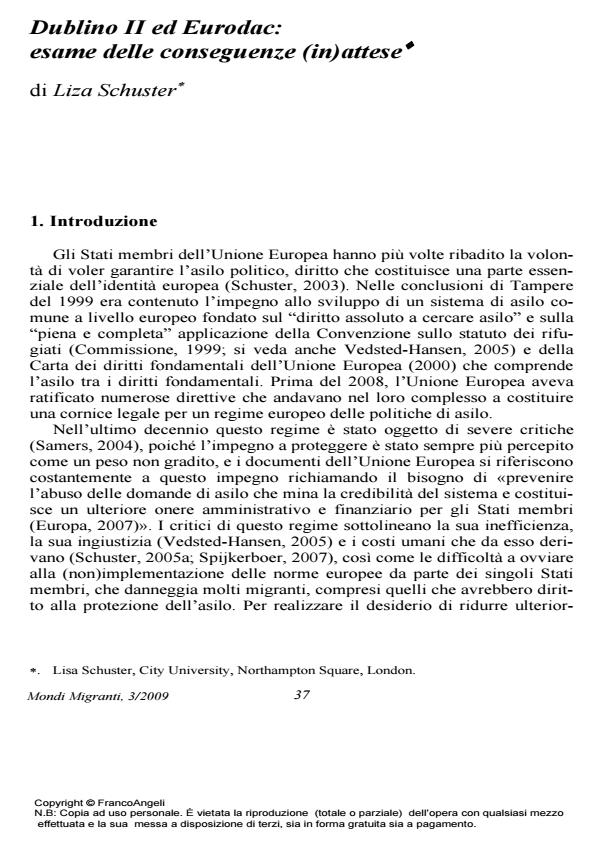Dublino II ed Eurodac: esame delle conseguenze (in)attese
Journal title MONDI MIGRANTI
Author/s Liza Schuster
Publishing Year 2010 Issue 2009/3
Language Italian Pages 20 P. 37-56 File size 534 KB
DOI 10.3280/MM2009-003003
DOI is like a bar code for intellectual property: to have more infomation
click here
Below, you can see the article first page
If you want to buy this article in PDF format, you can do it, following the instructions to buy download credits

FrancoAngeli is member of Publishers International Linking Association, Inc (PILA), a not-for-profit association which run the CrossRef service enabling links to and from online scholarly content.
Dublin II and Eurodac: Examining the (un)intended consequences - Although the numbers of asylum seekers in Europe is decreasing, the asylum policy of most EU member states continues to be driven by a fear of a potential increase. As a result, EU MS refuse to address the growing numbers of people caught between Eurodac and Dublin II. These includes the many thousands who transit Greece and Spain, where in theory they should claim asylum, but where in reality they have little chance of being able to make a claim, and almost no chance of having it examined properly, much less being actually granted asylum. This paper addresses two arguments: it will be argued that the concern of EU MS is actually to reduce the number of those able to apply for asylum to an absolute minimum, rather than ensuring access to this status to anyone who might need it, in other words, the rhetoric of abuse is a device to evade responsibility for providing protection to those in need, and secondly, it will be argued that the assumption underlying these different provisions, that there is no right to choose where one makes a claim, is evidence of a failure to recognise asylum seekers as autonomous human beings (or human beings tout court) and the reason why the policies don’t work even from a state’s perspective.
Keywords: Asylum seekers, European Union, Dublin Convention, Eurodac
- The Urban Governance of Asylum as a “Battleground”: Policies of Exclusion and Efforts of Inclusion in Italian Towns Maurizio Ambrosini, in Geographical Review /2021 pp.187
DOI: 10.1080/00167428.2020.1735938
Liza Schuster, Dublino II ed Eurodac: esame delle conseguenze (in)attese in "MONDI MIGRANTI" 3/2009, pp 37-56, DOI: 10.3280/MM2009-003003